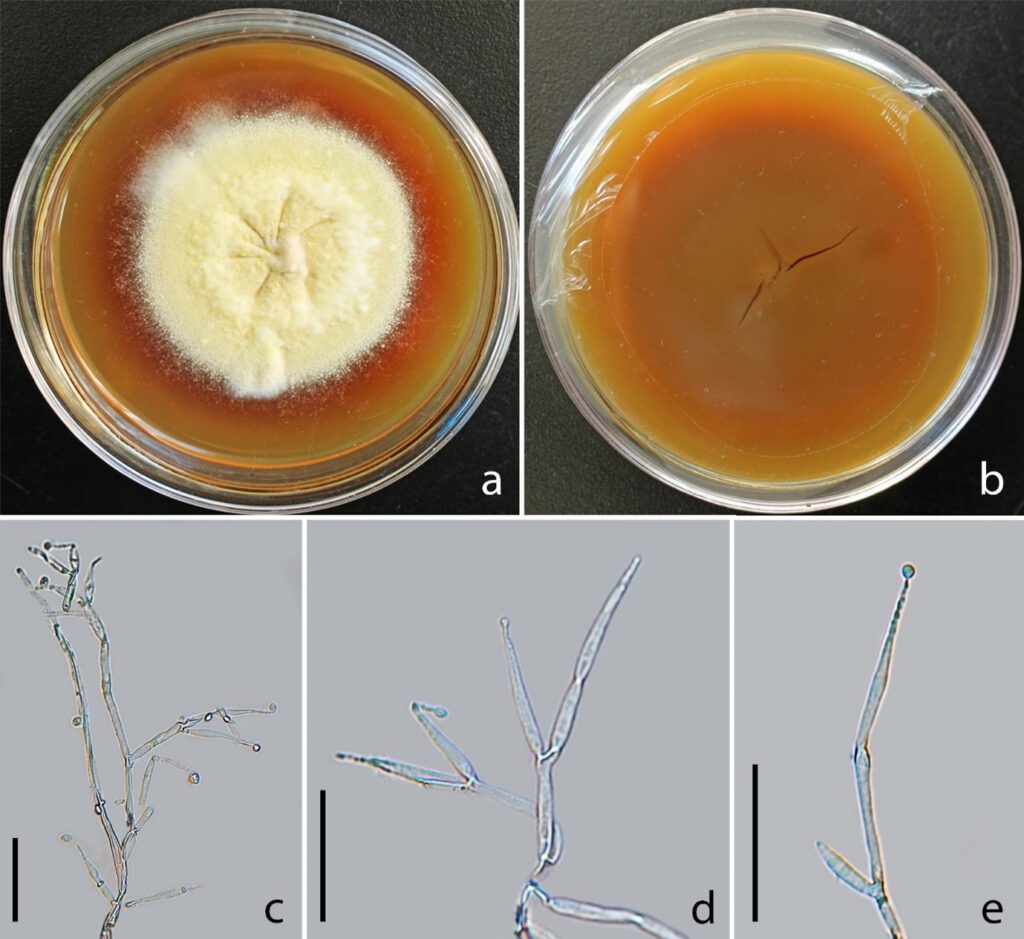Perennicordyceps lutea Y.B. Wang & Y.P Xiao, sp. nov. Fig. 14
MycoBank number: MB 559472; Index Fungorum number: IF 559472; Facesoffungi number: FoF 10736;
Etymology: This species name refers to the yellow color of the colony.
Holotype: kumcc3004
Parasitism on Ophiocordyceps sinensis (Ophiocordycipitaceae, Hypocreales). Sexual morph: Undetermined. Asexual morph: Hyphomycetous. Culture characters: Colonies derived from tissue isolation. Colonies on PDA slowly growing, reached to 3 cm diam in 20 days at 25 ℃, yellow, cottony with high mycelial density, reverse brown, no synnemata observed. Conidiophore 38–59 µm long ( = 48 µm, n = 60), 1–3 phialides in one. Metulae 10.8–20.2 × 1.4–2.1 µm (=15.5 × 1.5 µm, n=60), usually present, as additional branch. Phialide Hirsutella-like, 18.2–24.9 ( = 21.6, n = 60) long, hyaline, smooth, narrowly subulate with a short or long neck, base: 10.3–16.6 µm long, neck: 2–8 µm long. Conidia 1.2–2.3 µm (=1.8 µm, n=60), 1-celled, hyaline, globose.
Material examined: China, Yunnan Province, Kunming City. Parasitic on Ophiocordyceps sinensis (Ophiocordycipitaceae, Hypocreales), in the soil, 22 October 2021, Yuanbing Wang (Holotype: kumcc3004).
Notes: The new species sisters with Pe. paracuboidea with high support value (100% ML / 1.00 PP, Fig. 2; 99% ML / 1.00 PP, Fig. 3; 97% ML / 1.00 PP, Fig. 11). Perennicordyceps lutea differs with other species of Perennicordyceps in one-type and longer phialide, one-type and globose conidia.

Fig. 14. Perennicordyceps lutea (Holotype: kumcc3004) a, b. Colonies on PDA. c. Mycelium with phialides. d, e. Phialides with conidia. Scale Bars: c–e = 20 µm.
